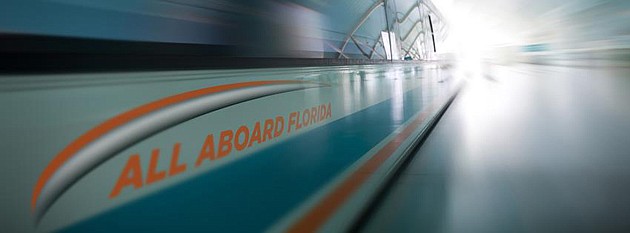- November 24, 2024
-
-
Loading

Loading

Onetime Disney executive Don Robinson's resume for overseeing ambitious startup ventures is filled with some remarkable global successes, from Disneyland Paris to Hong Kong Disneyland.
Robinson will need that experience and any leftover Disney magic he can marshal for his latest project — a passenger railroad planned for downtown Miami to Orlando, with a possible eventual Tampa station. The bold project, privately owned and operated with no public subsidies, is All Aboard Florida, a unit of Coral Gables-based Florida East Coast Industries. Announced in early 2012, the railroad is estimated to cost FECI at least $1 billon.
“This will require every bit of fortitude, discipline and entrepreneurial sprit we can muster,” says Robinson, co-president and chief operating officer of All Aboard Florida in an interview with the Business Observer. “It doesn't happen naturally. It has to be nurtured.”
Florida East Coast, with a predecessor company that dates back to 1892 and railroad mogul Henry Flagler, also operates a commercial real estate business and a logistics entity. But for the next two years or so, much of the public attention directed at Florida East Coast will be all about All Aboard Florida.
That's because the project is singularly distinctive: A privately owned passenger rail project of this size, 230 miles, has never been tried before in Florida, and few if any similar projects have been undertaken nationwide. The past few large-scale rail service project proposals in Florida, further, have failed to get traction, in part because the efforts included taxpayer-funded elements.
All Aboard Florida has four stations. Those are in downtown Miami, downtown Fort Lauderdale, downtown West Palm Beach and the Orlando International Airport. The service, expected to draw business and leisure travelers, will include Wi-Fi connected cars and gourmet meal options. Speeds will vary from about 80 mph to 125 mph, and the Miami-to-Orlando leg will take about three hours.
Jacksonville and Tampa stations are in the long-term plans, though Robinson says “we have to be sure to get the first part right or we won't get the second part right.” Co-president and Chief Development Officer Michael Reininger agrees that while Tampa, given its population, is enticing, it isn't a current priority.
Reininger, who helped coordinate a transit-oriented development project at Denver Union Station, says those priorities are wrapped around the ultimate goal: To have All Aboard Florida passenger service under way by the end of 2015.
“This project is unique because it's spread over 230 miles,” says Reininger, “and every mile has its own challenges.”
Those hurdles include permitting, environmental concerns, and meshing with neighborhoods along the tracks. Plus, the project, while unique, is also exceptionally expensive. The billion-dollar figure covers station construction, tracks, rail cars and everything in between. Florida East Coast already owns about 200 miles of track between Cocoa and Miami. It will build the rest of the tracks, from Cocoa to Orlando.
The funds, say Reininger and Robinson, will come from a variety of sources. That ranges from debt and equity partners to a Federal Railroad Administration loan.
One final, yet imposing task integral to the entire project, say All Aboard officials, is the sheer challenge of getting people to ride the rails. The company has spent a considerable amount of money on ridership projection studies, which validate the need on paper. But Robinson realizes studies aren't paid tickets.
“At the end of the day we have to convince people that a train is better than a car,” says Robinson. “The way the culture is in Florida, it is very car-centric.”
By the numbers
All Aboard Florida, a $1 billion project designed to provide passenger rail service from Miami to Orlando, and possibly Tampa someday, is one of the more unique transportation proposals in the country. Some details include:
- Station construction is expected to begin by the end of 2013. Passenger service could be under way by the end of 2015;
- Project will potentially drive up to 6,000 construction jobs, in addition to 1,000 jobs needed to operate the service;
- Officials project 50 million people could be potential customers;
- Train service is planned to run hourly in each direction;
- Project stretches 230 miles of railroad tracks;
- Speeds vary from up to 79 mph between Miami and West Palm Beach to up to 125 mph between Cocoa and Orlando. The Miami-to-Orlando leg will likely take about three hours.
Source: All Aboard Florida
